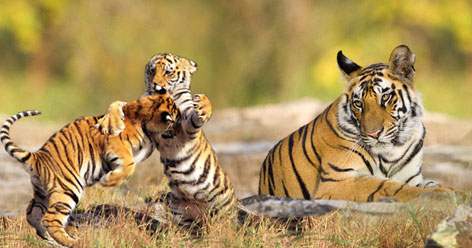The Kaziranga National Park, which was declared a World Heritage Site in the year of 1985 by UNESCO, is located in the centre of the state of Assam. This national park is significant for many reasons like even now it remains one of the few areas where there has been no major intrusion of human beings. On top of this, the Kaziranga National Park boasts of being home to the World’s largest population of the one-horned rhinoceroses in addition to the other animals like elephants, panthers, bears, tigers, mammals and birds.
The Kaziranga National Park is located on the banks of the Brahmaputra River on the southern side near the Mikir Hills. This national park is beautifully blessed with dense grasslands along with intermittent open forests and many streams and lakes. A major portion of the area remains inundated by flood waters every year. There are huge deposits of alluvial soil from Brahmaputra River and some of its tributaries.
At Kaziranga National Park there are basically three types of vegetation namely, the tropical wet evergreen forests, the tropical semi-evergreen forests and the alluvial inundated grasslands. In the western part one could find tall elephant grasses and short grasses based on the elevation of ground. These grasslands are surrounding the lakes which are otherwise known as bheels. Kaziranga national park is perhaps the richest place in the county in terms of flora and fauna. This national park harbours 15 different species of India’s most threatened animals. Capped langur, Hoolock gibbon, tiger panther Tigris, leopard, sloth bear, Ganges dolphin, otter wild boar, water buffalo, gaur, sambar swamp deer, hog deer and Indian muntjac are the mammals found over here.
There is a huge migration of elephants upon arrival of monsoon which they do in order to save themselves from the dangerous flooding. The water bodies which are present in abundance at this place have many different kinds of fishes and are also a source of food for some of the birds. The most prominent of fishes are grey pelican rookery, black-necked stork, Palla’s fish eagle and the great pied hornbill. Each year about 100 species of birds migrate to this place.
Kaziranga National Park is arguably the most outstanding place to have an adventurous trip while enjoying the rich flora and fauna.


